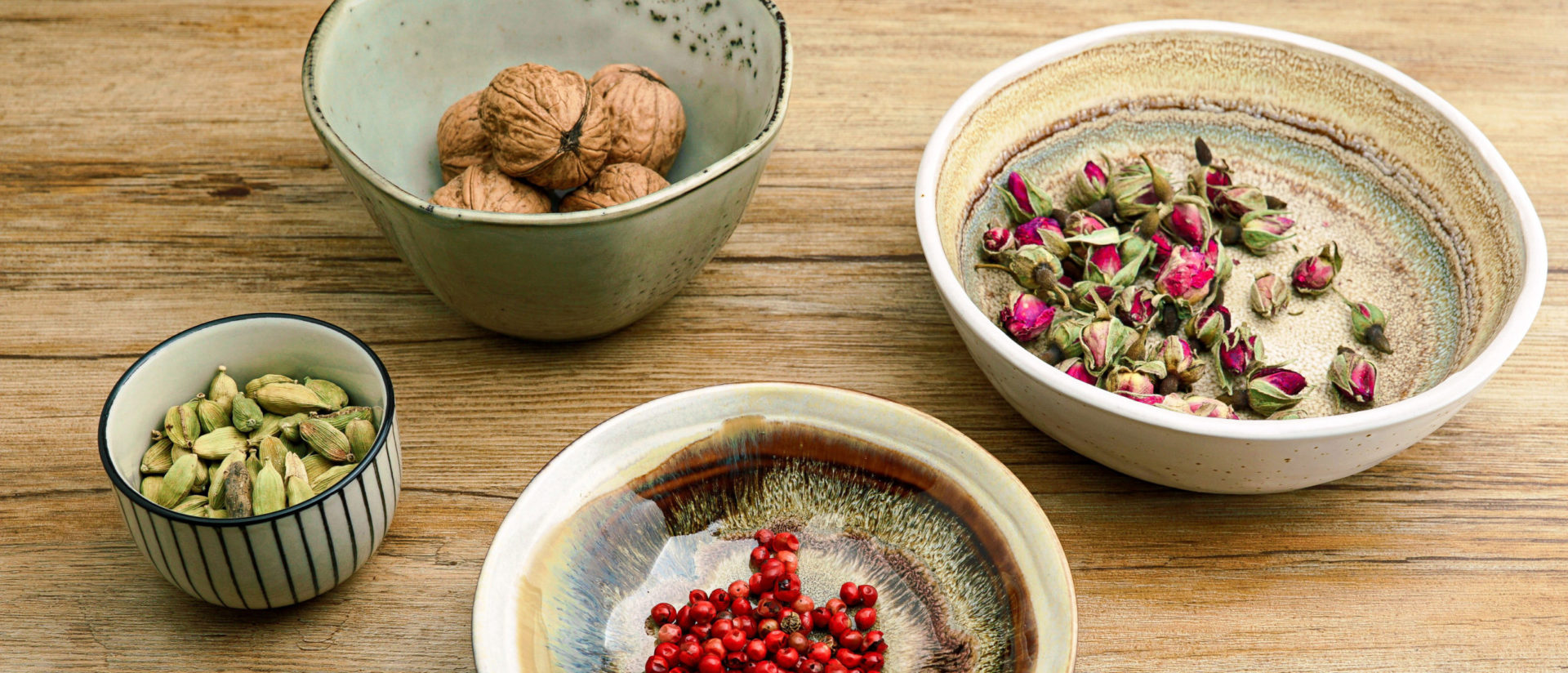
Blog
How to eat the Ayurvedic way & some hacks
Ayurveda, the holistic health system from India, is many thousands of years old. As an entire subject, of course, it is large and complex. You don’t need to know the whole subject unless you are planning on becoming an Ayurvedic doctor. At its root however, Ayurveda guides us on how to flow with our circadian rhythm and body clock. You don’t need to become a qualified practitioner to know how to eat the Ayurvedic way. People from India (or my family anyway) are not qualified practitioners but they know what kind of foods to eat, when to eat them and how best to tailor them. Just because they know how, doesn’t mean they always do!
In today’s blog I wanted to share some highlights on how to eat Ayurvedically.
You don’t have to eat Indian food to eat Ayurvedically
For that matter, not all Indian food is Ayurvedic. It is more about what is fresh and in season. In this age of supermarkets, produce is flown in from around the world. We can eat anything at any time of year but it is not local.
Hack: buy produce from your local area. Local vegetables frozen in season are better than ‘fresh’ vegetables imported from far away.
Food combinations
There are certain foods that when eaten combined, are said to be harder to digest and produce a toxin or ‘ama’. One of these combinations is mixing fruit with any other food. Dates and mangoes are the exceptions. Fruit digests quickly. When mixed with other foods, it stays in the stomach and ferments while the rest of the food is being broken down. This is the food combination that I see the most with my clients, which causes bloating, wind and IBS symptoms. Other incompatible food combinations include and are not limited to:
Mixing dairy and nightshades.
Mixing lemon with yoghurt, milk, cucumber or tomatoes.
Mixing beans with fruit, cheese, eggs, fish, milk, meat or yoghurt.
Hack: If you eat a dodgy food combination and have a stomach-ache, bloating or anything similar, try CCF tea. This is made from 1 tsp of coriander seeds, 1 tsp of cumin seeds, 1 tsp of fennel seeds. Put these seeds in 1 cup of water and bring to the boil before turning down the heat. After 5 minutes, strain and drink.
Food timings
In Ayurveda, your digestion is said to be at its strongest when the sun is highest in the sky. So, if possible, having your main meal at lunch time is recommended. Of course, in this day and age, it is not possible for a lot of people who work during the day. Having regular mealtimes is also recommended but it is important to eat when you have hunger. If you eat without hunger being present, your digestive juices aren’t ready in your stomach. This can cause indigestion.
Hack: If your main meal needs to be in the evening, ensure that you leave 2 – 3 hours after dinner before you sleep.
Drinking with meals
Drinking a lot of liquid with meals, especially cold liquids ‘dampens the digestive fire’. It is recommended to have some if you would like to but sip a warm drink.
Hack: Only drink when you have thirst. A lot of people seem to force litres of water down without thirst. Our bodies are a balance of salts, minerals and water. If you are constantly drinking water when the weather is not hot and you don’t need to (for exercise as an example), then you are changing your body’s healthy natural balance. See if you can notice if you are drinking because you are thirsty, or you are drinking automatically. You could always try having a drink an hour before your meal instead of with and see if it suits.
Eat calmly and pay attention to your food
It is recommended to cook and eat your food with love, calmly. A lot of us, when anxious or angry can get an upset stomach. Emotions affect us down to a cellular level. So can you imagine what a distraction it is for your digestion if you eat when you are feeling stressed, angry or upset?
Hack: Try some deep breathing, go for a walk around the block or speak to someone if you are having a stressful day to get those bad vibes out. Put that phone down for half an hour. Pay attention to how you feel when you are eating and try to pay attention only to your meal.
Hugs
Puja
Note: Ayurveda is a complementary practice and is not a replacement for seeing a GP.

